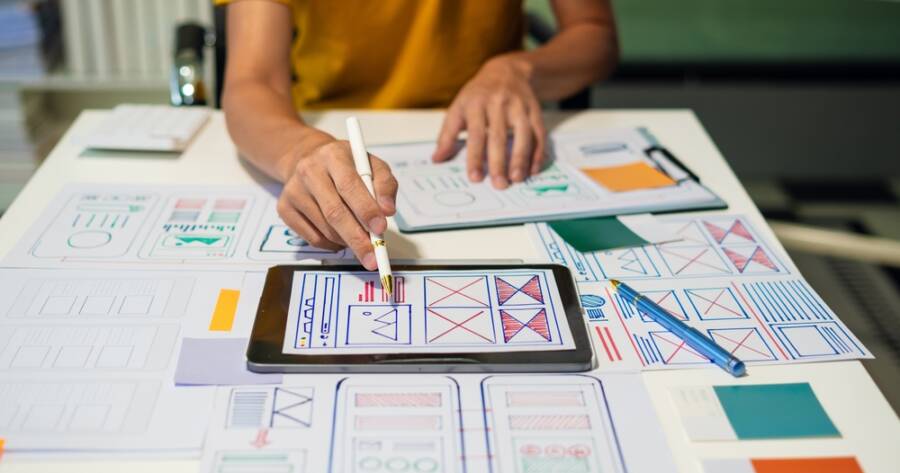Breaking into the graphic design industry can be both exciting and challenging, especially in a competitive and constantly evolving creative landscape. Whether you’re a recent graduate, transitioning from another career, or a self-taught designer building your skills, landing that first job requires a unique combination of creativity, strategy, dedication, and persistence. Understand how you can stand out, build your portfolio, and confidently secure a rewarding job in graphic design.
1. Build a Strong Foundation of Skills
Before applying to jobs, ensure you have a solid understanding of essential design principles like typography, color theory, layout, and visual hierarchy. You’ll also need proficiency in industry-standard software such as:
- Adobe Creative Suite (Photoshop, Illustrator, InDesign)
- Figma or Sketch for UI/UX design
- Canva for quick, lightweight projects
If you’re just starting, consider taking online courses from platforms like Coursera, Skillshare, LinkedIn Learning, or Adobe’s tutorials to sharpen your skills.
2. Create a Standout Portfolio
Your portfolio is your most powerful tool. It showcases your abilities, creative process, and range of work. Include 5-10 of your best pieces, demonstrating versatility across different types of design such as logos, posters, social media graphics, web layouts, and branding projects.
If you lack professional experience, create personal projects, volunteer for non-profits, or redesign existing brand materials as practice. Show your process with before-and-after comparisons, sketches, mood boards, or case studies that explain your design choices.
3. Develop a Personal Brand
As a designer, your personal brand speaks volumes. Design a clean, cohesive visual identity for yourself that extends across your portfolio, resume, website, and social media. Choose a color palette, typography, and tone of voice that reflects your style and professionalism.
Your resume should be visually appealing but easy to read. Tailor it for each job, emphasizing design-related experience, relevant software skills, and soft skills like communication, collaboration, and time management.
4. Create a Professional Online Presence
In today’s job market, visibility is key. Build a portfolio website using platforms like Behance, Adobe Portfolio, or Squarespace. Include an “About” page, contact information, and links to your resume and social profiles.
Establish a presence on LinkedIn and design-specific platforms like Dribbble and Instagram. Regularly share your work, creative insights, or behind-the-scenes content to engage with the design community and potential employers.
5. Network and Make Industry Connections
Many graphic design jobs are filled through connections rather than job boards. Attend design meetups, conferences, workshops, or webinars—whether in-person or online. Join design communities like AIGA, Slack groups, Reddit forums, or Discord servers to meet professionals and learn from others.
Don’t be afraid to reach out to designers you admire. Ask for advice, feedback, or informational interviews. A strong network can open doors to freelance gigs, internships, or job referrals.
6. Apply Strategically and Be Persistent
Search for jobs on platforms like Indeed, LinkedIn, Glassdoor, and design-specific boards like AIGA, Dribbble Jobs, or We Work Remotely. Tailor your application for each role, emphasizing how your skills align with the company’s needs.
Entry-level positions, internships, or freelance work can all be stepping stones to a full-time role. Keep a spreadsheet to track your applications, follow up after interviews, and be prepared to face rejections, it’s part of the process.
7. Continue Learning and Improving
The design industry evolves constantly. Stay up-to-date with trends, tools, and best practices by following design blogs, YouTube channels, podcasts, and newsletters. Always be open to feedback, seek critique, and challenge yourself with new projects or styles.
Turning Creativity Into Career Success
Landing a job in graphic design takes more than artistic talent, it requires a combination of technical skills, professional branding, strategic networking, and relentless determination. By building a strong portfolio, making meaningful connections, and staying current with industry trends, you can turn your creative passion into a rewarding career. Stay curious, stay inspired, and don’t give up your first design job is within reach.

